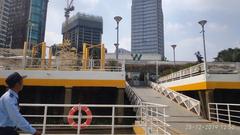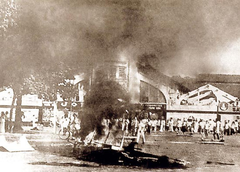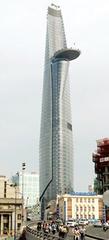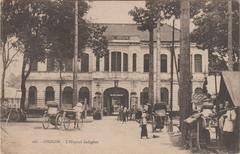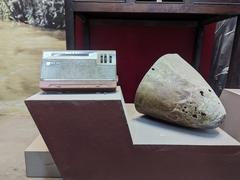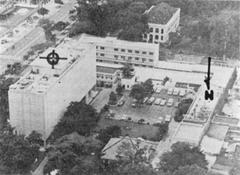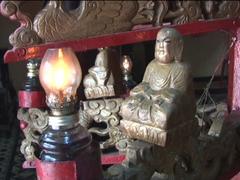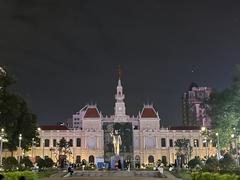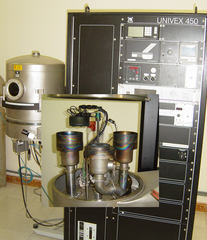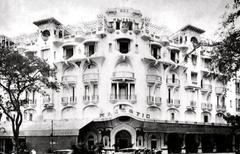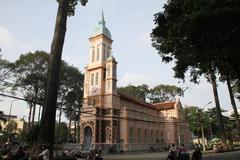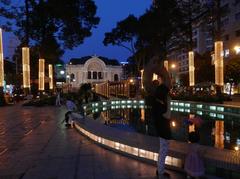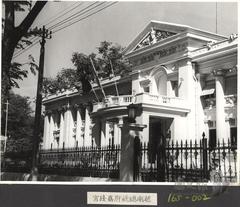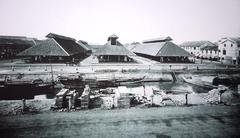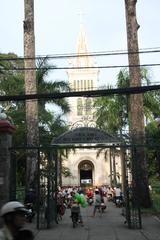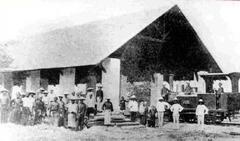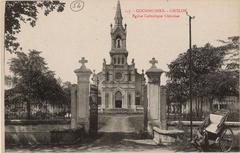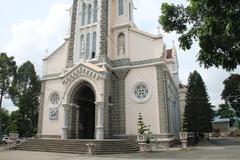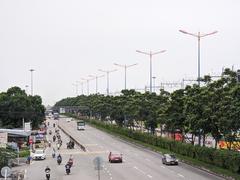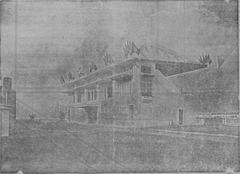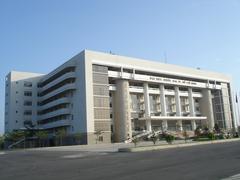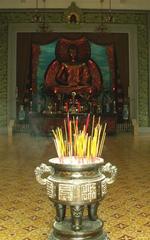Visiting Guide to Nhà Thờ Đức Bà in Ho Chi Minh City, Vietnam
Date: 17/07/2024
Introduction
Nhà Thờ Đức Bà, also known as the Notre-Dame Cathedral Basilica of Saigon, stands as one of the most iconic landmarks in Ho Chi Minh City, Vietnam. This majestic cathedral, with its deep historical roots and stunning architectural design, attracts visitors from all corners of the globe. Constructed between 1863 and 1880 by French colonists, it symbolizes the spread of Catholicism and Western influence in Southeast Asia during the 19th century (Vietnam Online). The cathedral’s neo-Romanesque architectural style, complete with two towering bell towers and intricate stained glass windows, reflects the European aesthetic and craftsmanship of that era. Beyond its architectural grandeur, Nhà Thờ Đức Bà serves as a testament to the city’s colonial past, its role during the Vietnam War, and its continued cultural and religious significance in modern times (Saigon Online). This comprehensive guide aims to provide everything you need to know about visiting Nhà Thờ Đức Bà, from its rich history and cultural impact to practical visitor information, ensuring a memorable and insightful experience.
Table of Contents
- Introduction
- History of Nhà Thờ Đức Bà
- Cultural and Religious Impact
- Architectural Features and Artistic Elements
- Visitor Information
- Preservation Efforts and Challenges
- FAQ Section
- Conclusion
History of Nhà Thờ Đức Bà
Origins and Construction
Nhà Thờ Đức Bà’s construction began in 1877 and was completed in 1880 by French colonists. Designed by French architect Jules Bourard, the cathedral was intended to symbolize the power and influence of the French colonial empire in Southeast Asia. Materials for the construction were imported entirely from France, including bricks from Marseille and stained glass windows from Chartres. The cathedral’s neo-Romanesque architectural style, featuring two bell towers reaching a height of 58 meters, reflects the European influence on Vietnamese culture during the colonial period.
Significance During the Colonial Era
During the French colonial period, the cathedral served as both a place of worship and a social hub for the French community in Saigon. It played a crucial role in the spread of Christianity in the region and hosted various social activities, reinforcing cultural ties between the French colonists and the local population.
Post-Colonial Period and the Vietnam War
After gaining independence from France in 1954, Vietnam saw the cathedral continue to hold significant cultural and religious importance. During the Vietnam War, Saigon (now Ho Chi Minh City) was the capital of South Vietnam, and Nhà Thờ Đức Bà remained a focal point for the Catholic community. It witnessed numerous historical events, including the fall of Saigon in 1975, which marked the end of the Vietnam War and the reunification of Vietnam under communist rule.
Renovations and Modern-Day Significance
Following the war, Nhà Thờ Đức Bà underwent several renovations to preserve its structural integrity and historical significance. Notable renovations in the early 2000s included replacing the roof tiles and restoring the interior. Today, the cathedral remains an active place of worship and a popular tourist attraction, drawing visitors from around the world.
Cultural and Religious Impact
Nhà Thờ Đức Bà stands as a testament to Ho Chi Minh City’s colonial past and its enduring legacy. It plays a vital role in the religious life of the local Catholic community, hosting regular masses, religious ceremonies, and special events like Christmas and Easter celebrations. The cathedral’s significance extends beyond its religious function, serving as a cultural landmark that embodies the rich history and diverse heritage of the city.
Architectural Features and Artistic Elements
The cathedral is renowned for its stunning architectural features and artistic elements. Its façade is adorned with intricate carvings and statues, including a statue of the Virgin Mary in front of the main entrance. The interior is equally impressive, with high vaulted ceilings, ornate altars, and beautiful stained glass windows depicting various biblical scenes. The twin bell towers house six bronze bells cast in France, still in use today.
Visitor Information
Visiting Hours and Tickets
Nhà Thờ Đức Bà is open to visitors daily from 8 AM to 5 PM. Admission is free, but donations are welcome and help with the cathedral’s upkeep. It’s recommended to visit early in the day to avoid the crowds.
Travel Tips
- Accessibility: The cathedral is located in the heart of District 1, making it easily accessible by taxi, bus, or a short walk from other major attractions.
- Nearby Attractions: Combine your visit with nearby attractions such as the Saigon Central Post Office, the Reunification Palace, and the War Remnants Museum.
- Photography: The best spots for photography include the front façade with the Virgin Mary statue and the interior’s stained glass windows.
- Guided Tours: Consider joining a guided tour to learn more about the cathedral’s history and significance.
Preservation Efforts and Challenges
Preserving the historical and architectural integrity of Nhà Thờ Đức Bà remains a continuous challenge due to Ho Chi Minh City’s tropical climate. Efforts to maintain and restore the cathedral require substantial financial resources and expertise. Recent calls for increased preservation efforts aim to ensure that future generations can continue to appreciate this iconic landmark.
FAQ Section
- What are the opening hours of Nhà Thờ Đức Bà? The cathedral is open daily from 8 AM to 5 PM.
- How much do tickets to Nhà Thờ Đức Bà cost? Admission is free, but donations are welcome.
- Is Nhà Thờ Đức Bà accessible by public transport? Yes, it is located in District 1 and easily accessible by taxi or bus.
- Are guided tours available? Yes, guided tours are available and recommended for a more in-depth understanding of the cathedral’s history.
Conclusion
Nhà Thờ Đức Bà stands as a symbol of Ho Chi Minh City’s rich history and cultural diversity. Its construction during the French colonial period, role during the Vietnam War, and continued significance in modern times highlight the cathedral’s enduring legacy. As a place of worship, cultural landmark, and historical monument, Nhà Thờ Đức Bà remains an integral part of the city’s identity and a testament to the resilience and adaptability of the Vietnamese people. Visit and explore this iconic cathedral to appreciate its beauty and historical significance firsthand.
Call to Action
For more information on visiting Ho Chi Minh City’s historical sites, download our mobile app Audiala, check out related posts, or follow us on social media for updates and travel tips.
References
- Vietnam Online. (n.d.). Notre-Dame Cathedral Basilica of Saigon. Retrieved from Vietnam Online
- Saigon Online. (n.d.). Notre-Dame Cathedral. Retrieved from Saigon Online
- Lonely Planet. (n.d.). Notre-Dame Cathedral. Retrieved from Lonely Planet
